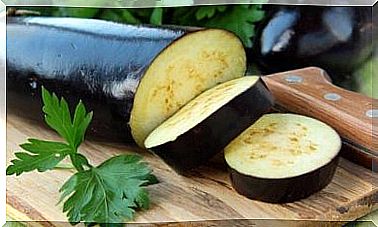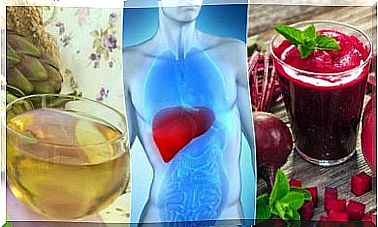Red Vegetables: Nutritional Value And How To Include Them In The Diet
From tomatoes to chicory, red vegetables are an excellent source of vitamins, minerals and antioxidants. We are going to present 12 of them that bring many health benefits.
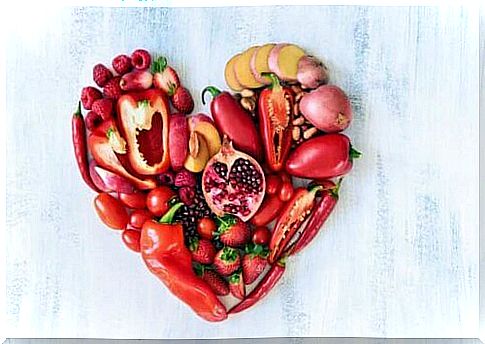
Making a dish look like a rainbow is not just a game, but a real health issue. Introducing red, green, white or yellow plants in the diet is a way to provide a wide variety of nutrients with ample activity in the body.
Experts have long focused on this question in order to be able to differentiate what each of them brings us. In this article, we will focus on red foods: a color that fills us with energy and vitality.
Composition and benefits of red plants
Those who are responsible for bringing their color to plants are the pigments that are found there in a natural way. Science has been interested in their presence in food because they can have positive effects on the body. Regarding red fruits and vegetables, the most common pigments are lycopene, anthocyanins, beta-cryptoxanthin and betacyanins.
More specifically, the consumption of red plants has been associated with a lower risk of suffering from certain types of cancer, such as that of the lung (thanks to carotenes) and prostate. Further progress is nevertheless necessary, even if the first indications propose a relation between the ingestion and the reduction of the probability of developing these pathologies.
In addition, carotenoids play a fundamental role in the development of neurological health as they are present in large quantities in the brain. Thanks to them and their anti-inflammatory and antioxidant action, their consumption can prevent the onset of neurodegenerative diseases.
They are also linked to better visual ability and enhanced night vision. In addition, there is a lower likelihood of developing problems such as muscle degeneration associated with age.
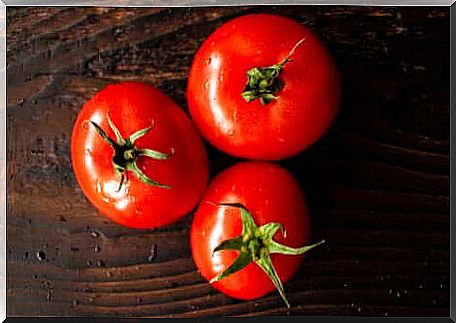
12 options of red plants and their respective benefits
Food guides in many countries already include a variety of colors in the diet among their recommendations. To start giving a touch of strength and vitality to dishes, you can choose from the 12 red foods that we are going to detail for you right now.
1. Tomatoes
The first thing that surprises when we talk about tomatoes is knowing that they are a fruit that is eaten like a vegetable. Originally from South America, they are now famous around the world and come in a wide variety of sizes and shapes.
Their flavor combines very well with other foods and they provide large amounts of vitamin C, potassium and lycopene. It should also be noted that it can be found in high concentrations in tomato sauce or ketchup.
2. Red pepper
Another of the fruits native to the American continent that has spread around the world is the bell pepper. This food is hollow in the middle, although the edible varieties have been modified to be more fleshy and softer.
There are also green and yellow peppers, but it is the red ones that contain the greatest amount of beta-carotenes. We can also highlight their high concentration of vitamin C, B6, folate and antioxidants.
3. Beet
The stem of the Beta vulgaris plant has been eaten since prehistoric times. Among its pigments, betaines are the most numerous and can even color the foods that are cooked with it.
Their high natural sugar content is often used to develop sweet recipes such as cakes or syrups. However, it should be remembered that the consumption of beet juice can cause some adverse effects because it would increase the concentration of nitrates, capable of stimulating abnormal cell growth.
4. Chili
It belongs to the same family as red peppers but it is smaller and more pungent. However, its small size should not be misleading because it is a real nutritional treasure.
Peppers contain a large amount of vitamin C and A. In addition, one of their characteristic components (capsaicin) has a strong analgesic activity.
5. Red onion
There are hundreds of varieties of this plant. One of them has the outer layers tinted due to the presence of anthocyanins. This is the red onion, although this color is often lost when cooked. It can be eaten raw but it is very useful for caramelizing or cooking jams and chutneys.
6. Chicory
It belongs to the genus Cichorium, like endive or escarole, and stands out for its slightly bitter flavor. It is used a lot in some pasta and risotto recipes. You should know that this is a good source of vitamin K and minerals, such as copper or manganese.
7. Red chard
This edible plant stands out for its fleshy leaves and stems. The green chard are more famous and usual, but some varieties contain betaines and have a red coloring. Their culture has picked up well in recent years.
8. Watermelon
The ultimate summer fruit: watermelon is very light, hydrating and a source of minerals, such as manganese and potassium. Whole or cut into pieces, it makes an ideal dessert and also goes very well with savory ingredients.
9. Grape
The edible berries of the Vitis vinifera plant come mainly from Europe. Unlike that used for making wine, table grapes come in clusters and large grains and have a milder flavor.
Research on its red pigments, along with resveratrol and other phytonutrients, suggests that it may help maintain a healthy heart and protect against aging and age-related diseases.
10. Strawberries
They come from a very simple plant to grow but you can only enjoy them in summer. They can be harvested when they are ripe and, since they are fragile, they should be consumed within a few days. Strawberries are light, with a high presence of fiber, potassium and magnesium.
11. Cherry
It is one of the most popular fruits thanks to its natural sweetness, although there is a variety with a sour flavor. Regardless, both contain different antioxidants and polyphenols (beta-carotenes, anthocyanins and flavonoids) with possible anti-inflammatory activity.
12. Grenada
The shrub Prunica granatum produces a red fruit with high nutritional value. Their skin is inedible and contains small seeds of intense color. You can juice them or add them to a lot of fresh dishes.
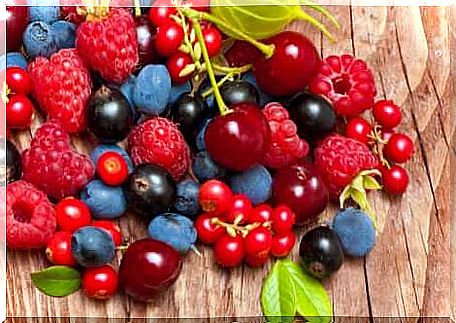
Tips for using red plants in the kitchen
One of the easiest ways to reap the benefits of red pigments is to eat fruits of that color every day. There is a good variety, so you can have it on hand all year round.
In addition to eating them fresh for dessert or as a snack, they can also be included in certain preparations or cooking recipes:
- Fruit milkshake (with or without milk).
- Fruit and vegetable smoothies.
- Salads with a sweet and crunchy touch.
- Jams and compotes.
In the case of vegetables, one of the easiest ways to use them is to add them to salads. We can thus take advantage of all their nutrients, such as water-soluble vitamins and minerals.
It is not necessary to include them all because the richness lies in the variety. Tomatoes, roasted peppers, red onions or beets can be combined with green, yellow, orange and white vegetables.
However, they should not be included only in their raw form because some of the pigments that give them their color increase their action with heat and cooking. Adding olive oil or another source of fat (such as avocados or dried fruits) also increases their availability and absorption.
It is therefore better to prepare stews with tomato or homemade tomato sauce, grilled peppers or pisto, beetroot cream or a chard omelet. In addition, we must not forget that certain fruits such as watermelon are delicious once they are cooked on the plancha with a little oil and can be accompanied by a good hard cheese.
Why is it important to eat red vegetables
Fruits and vegetables of this color, such as beets, peppers, tomatoes, watermelon and cherries, have positive effects on health and the prevention of certain diseases. However, one type of food does not provide all the nutrients that we need. This is why it is also necessary to include green, yellow, orange or blue pigments in the diet.
The vast majority of red foods are found among fruits and vegetables. Their positive effects are well known and it is for this reason that we recommend the ingestion of 5 servings of fruits and vegetables per day.
You can’t forget about other food groups, such as proteins, whole grains, olive oil and dried fruits. Let’s not forget that variety is one of the keys to healthy eating.

